All Available Episode
All World History Episode
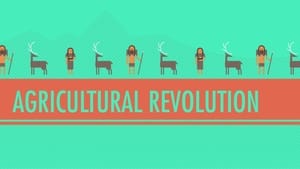
1. The Agricultural Revolution
In which John Green investigates the dawn of human civilization. John looks into how people gave up hunting and gathering to become agriculturalists, and how that change has influenced the world we live in today. Also, there are some jokes about cheeseburgers.
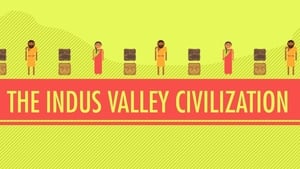
2. Indus Valley Civilization
In which John Green teaches you about the Indus Valley Civilization, one of the largest of the ancient civilizations. John teaches you the who, how, when, where and why of the Indus Valley Civilization, and dispenses advice on how to be more successful in your romantic relationships.
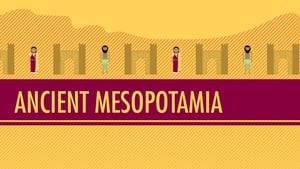
3. Mesopotamia
In which John presents Mesopotamia, and the early civilizations that arose around the Fertile Crescent.
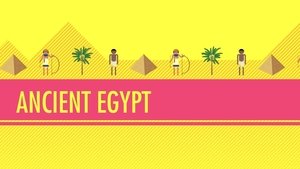
4. Ancient Egypt
In which John covers the long, long history of ancient Egypt, including the Old, Middle and New Kingdoms, and even a couple of intermediate periods. Learn about mummies, pharaohs, pyramids and the Nile with John Green.
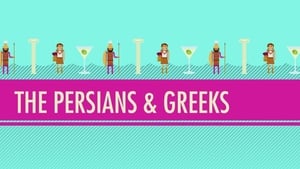
5. The Persians & Greeks
In which John compares and contrasts Greek civilization and the Persian Empire. Of course we're glad that Greek civilization spawned modern western civilization, right? Maybe not. From Socrates and Plato to Darius and Xerxes, John explains two of the great powers of the ancient world, all WITHOUT the use of footage from 300.
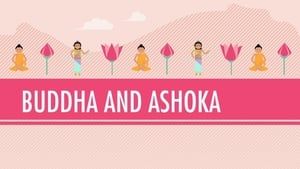
6. Buddha & Ashoka
In which John relates a condensed history of India, post-Indus Valley Civilization. John explores Hinduism and the origins of Buddhism. He also gets into the reign of Ashoka, the Buddhist emperor who, in spite of Buddhism's structural disapproval of violence, managed to win a bunch of battles.
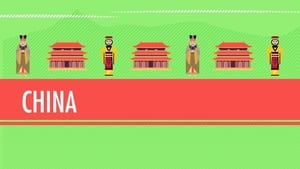
7. 2,000 Years of Chinese History! The Mandate of Heaven & Confucius
In which John introduces you to quite a lot of Chinese history by discussing the complicated relationship between the Confucian scholars who wrote Chinese history and the emperors (and empress) who made it. Included is a brief introduction to all the dynasties in Chinese history and an introduction to Confucius and the Confucian emphasis on filial piety, the role the mandate of heaven played in organizing China, and how China became the first modern state.
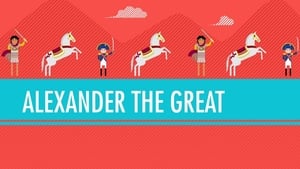
8. Alexander the Great and the Situation... the Great?
In which you are introduced to the life and accomplishments of Alexander the Great, his empire, his horse Bucephalus, the empires that came after him, and the idea of Greatness. Is greatness a question of accomplishment, of impact, or are people great because the rest of us decide they're great? Also discussed are Kim Kardashian and the Situation, gender bias in history, Catherine the Great's death (not via horse love), the ardent love other generals--from Pompey the Great to Napoleon--had for Alexander, a bit of Persian history.
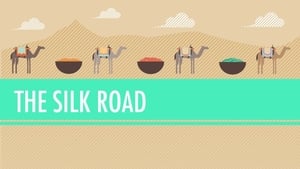
9. The Silk Road & Ancient Trade
The Silk Road and Ancient Trade: In which John Green teaches you about the so-called Silk Road, a network of trade routes where goods such as ivory, silver, iron, wine, and yes, silk were exchanged across the ancient world, from China to the West. Along with all these consumer goods, things like disease and ideas made the trip as well. As is his custom, John ties the Silk Road to modern life, and the ways that we get our stuff today.
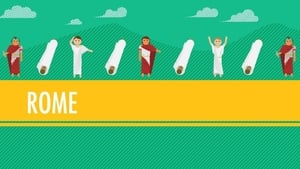
10. The Roman Empire. Or Republic. Or... Which Was It?
In which John Green explores exactly when Rome went from being the Roman Republic to the Roman Empire. Here's a hint: it had something to do with Julius Caesar, but maybe less than you think. Find out how Caesar came to rule the empire, what led to him getting stabbed 23 times on the floor of the senate, and what happened in the scramble for power after his assassination. John covers Rome's transition from city-state to dominant force in the Mediterranean in less than 12 minutes. Well, Rome's expansion took hundreds of years, he just explains it in under 12 minutes. The senate, the people, Rome, the caesarian section, the Julian calendar and our old friend Pompey all make appearances, but NOT the Caesar Salad, as Julius had nothing to do with it.
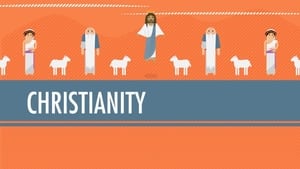
11. Christianity from Judaism to the Constantine
In which John Green teaches you the history of Christianity, from the beginnings of Judaism and the development of monotheism, right up to Paul and how Christianity stormed the Roman Empire in just a few hundred years. Along the way, John will cover Abram/Abraham, the Covenant, the Roman Occupation of Judea, and the birth, life, death and legacy of Jesus of Nazareth. No flame wars! Let's keep the commentary civil.
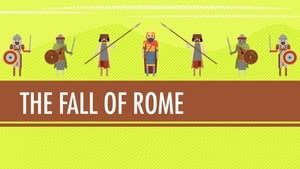
12. Fall of the Roman Empire... in the 15th Century
In which John Green teaches you about the fall of the Roman Empire, which happened considerably later than you may have been told. While the Western Roman Empire fell to barbarians in 476 CE, the Byzantines in Constantinople continued the Eastern Empire nicely, calling themselves Romans for a further 1000 years. Find out what Justinian and the rest of the Byzantine emperors were up to over there, and how the Roman Empire dragged out its famous Decline well into medieval times. In addition to all this, you'll learn about ancient sports riots and hipster barbarians, too.

13. Islam, the Quran, and the Five Pillars All Without a Flamewar
In which John Green teaches you the history of Islam, including the revelation of the Qu'ran to Muhammad, the five pillars of Islam, how the Islamic empire got its start, the Rightly Guided Caliphs, and more. Learn about hadiths, Abu Bakr, and whether the Umma has anything to do with Uma Thurman (spoiler alert: it doesn't). Also, learn a little about the split between Sunni and Shia Muslims, and how to tell if this year's Ramadan is going to be difficult for your Muslim friends. Let's try to keep the flame wars out of this reasoned discussion.
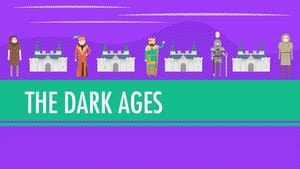
14. The Dark Ages... How Dark Were They, Really?
John Green teaches you about the so-called Dark Ages, which it turns out weren't as uniformly dark as you may have been led to believe. While Europe was indeed having some issues, many other parts of the world were thriving and relatively enlightened. John covers European Feudalism, the cultural blossoming of the Islamic world, and the scientific and artistic advances in China, all during these "Dark Ages." Along the way, John will raise questions about the validity of Europe's status as a continent, reveal the best and worst years of his life, and frankly state that science and religion were once able to coexist.
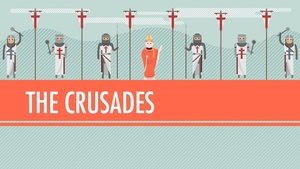
15. The Crusades - Pilgrimage or Holy War
In which John Green teaches you about the Crusades embarked upon by European Christians in the 12th and 13th centuries. Our traditional perception of the Crusades as European Colonization thinly veiled in religion isn't quite right. John covers the First through the Fourth Crusades, telling you which were successful, which were well-intentioned yet ultimately destructive, and which were just plain crazy. Before you ask, no, he doesn't cover the Children's Crusade, in which children were provoked to gather for a Crusade, and then promptly sold into slavery by the organizers of said Crusade. While this story is charming, it turns out to be complete and utter hooey.
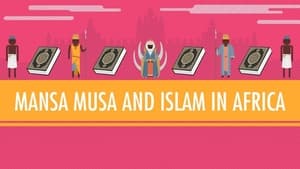
16. Mansa Musa & Islam in Africa
In which John Green teaches you about Sub-Saharan Africa! So, what exactly was going on there? It turns out, it was a lot of trade, converting to Islam, visits from Ibn Battuta, trade, beautiful women, trade, some impressive architecture, and several empires. John not only cover the the West African Malian Empire, which is the one Mansa Musa ruled, but he discusses the Ghana Empire, and even gets over to East Africa as well to discuss the trade-based city-states of Mogadishu, Mombasa, and Zanzibar. In addition to all this, John considers emigrating to Canada.
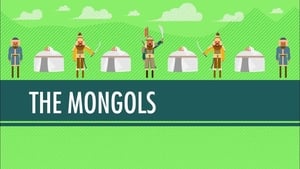
17. Wait For It... The Mongols!
In which John Green teaches you, at long last, about the most exceptional bunch of empire-building nomads in the history of the world, the Mongols! How did the Mongols go from being a relatively small band of herders who occasionally engaged in some light hunting-gathering to being one of the most formidable fighting forces in the world? It turns out Genghis Khan was a pretty big part of it, but you probably already knew that. The more interesting questions might be, what kind of rulers were they, and what effect did their empire have on the world we know today? Find out, as John FINALLY teaches you about the Mongols.
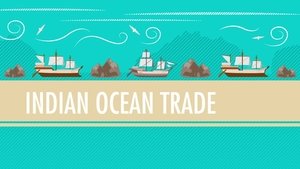
18. International Commerce, Snorkeling Camels, & The Indian Ocean Trade
In which John Green teaches you the history of the Indian Ocean Trade. John weaves a tale of swashbuckling adventure, replete with trade in books, ivory, and timber. Along the way, John manages to cover advances in seafaring technology, just how the monsoons work, and there's even a disembowelment for you Fangoria fans.
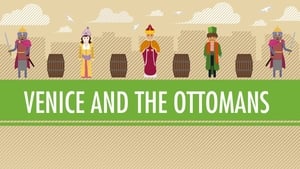
19. Venice & The Ottoman Empire
In which John Green discusses the strange and mutually beneficial relationship between a republic, the citystate of Venice, and an Empire, the Ottomans--and how studying history can help you to be a better boyfriend and/or girlfriend. Together, the Ottoman Empire and Venice grew wealthy by facilitating trade: The Venetians had ships and nautical expertise; the Ottomans had access to many of the most valuable goods in the world, especially pepper and grain. Working together across cultural and religious divides, they both become very rich, and the Ottomans became one of the most powerful political entities in the world. We also discuss how economic realities can overcome religious and political differences (in this case between Muslims and Christians), the doges of Venice, the sultans of the Ottoman empire, the janissaries and so-called slave aristocracy of the Ottoman Empire, and how money and knowledge from the Islamic world helped fuel and fund the European Renaissance.
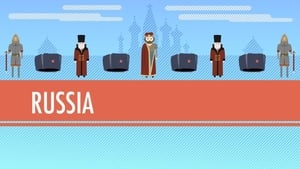
20. Russia, The Kievan Rus, and the Mongols
In which John Green teaches you how Russia evolved from a loose amalgamation of medieval principalities known as the Kievan Rus into the thriving democracy we know today. As you can imagine, there were a few bumps along the road. It turns out, our old friends the Mongols had quite a lot to do with unifying Russia. In yet another example of how surprisingly organized nomadic raiders can be, the Mongols brought the Kievan Rus together under a single leadership, and concentrated power in Moscow. This set the stage for the various Ivans (the Great and the Terrible) to throw off the yoke and form a pan-Russian nation ruled by an autocratic leader. More than 500 years later, we still have autocratic leadership in Russia.
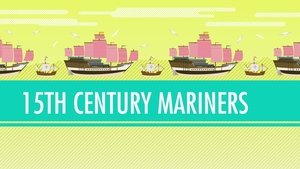
21. Columbus, de Gama, and Zheng He! 15th Century Mariners
In which John Green teaches you about the beginning of the so-called Age of Discovery. You've probably heard of Christopher Columbus, who "discovered" America in 1492, but what about Vasco da Gama? How about Zheng He? Columbus gets a bad rap from many modern historians, but it turns out he was pretty important as far as the history of the world goes. That said, he wasn't the only pioneer plying the seas in the 1400s. In Portugal, Vasco da Gama was busy integrating Europe into the Indian Ocean Trade by sailing around Africa. Chinese admiral Zheng He was also traveling far and wide in the largest wooden ships ever built. Columbus, whether portrayed as hero or villain, is usually credited as the great sailor of the 15th century, but he definitely wasn't the only contender. What better way to settle this question than with a knock-down, drag-out, no holds barred, old-fashioned battle royal? We were going to make it a cage match, but welding is EXPENSIVE.
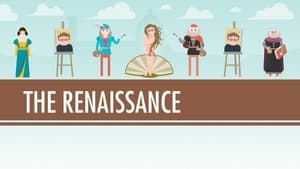
22. The Renaissance... Was it a Thing?
In which John Green teaches you about the European Renaissance. European learning changed the world in the 15th and 16th century, but was it a cultural revolution, or an evolution? We'd argue that any cultural shift that occurs over a couple of hundred years isn't too overwhelming to the people who live through it. In retrospect though, the cultural bloom in Europe during this time was pretty impressive. In addition to investigating what caused the Renaissance and who benefitted from the changes that occurred, John will tell you just how the Ninja Turtles got mixed up in all this.
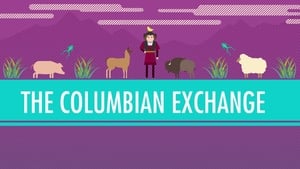
23. The Colombian Exchange
In which John Green teaches you about the changes wrought by contact between the Old World and the New. John does this by exploring the totally awesome history book "The Columbian Exchange" by Alfred Cosby, Jr. After Columbus "discovered" the Americas, European conquerors, traders, and settlers brought all manner of changes to the formerly isolated continents. Disease and invasive plant and animal species remade the New World, usually in negative ways. While native people, plants, and animals were being displaced in the Americas, the rest of the world was benefitting from American imports, especially foods like maize, tomatoes, potatoes, pineapple, blueberries, sweet potatoes, and manioc. Was the Columbian Exchange a net positive? It's debatable. So debate.
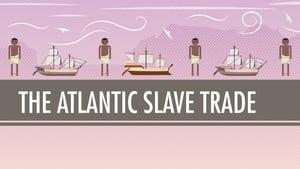
24. The Atlantic Slave Trade
In which John Green teaches you about one of the least funny subjects in history: slavery. John investigates when and where slavery originated, how it changed over the centuries, and how Europeans and colonists in the Americas arrived at the idea that people could own other people based on skin color. Slavery has existed as long as humans have had civilization, but the Atlantic Slave Trade was the height, or depth, of dehumanizing, brutal, chattel slavery. American slavery ended less than 150 years ago. In some parts of the world, it is still going on. So how do we reconcile that with modern life? In a desperate attempt at comic relief, Boba Fett makes an appearance.
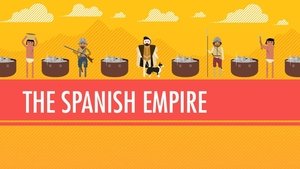
25. The Spanish Empire, Silver, and Runaway Inflation
In which John Green explores how Spain went from being a middling European power to one of the most powerful empires on Earth, thanks to their plunder of the New World in the 16th and 17th centuries. Learn how Spain managed to destroy the two biggest pre-Columbian civilizations, mine a mountain made of silver, mishandle their economy, and lose it all by the mid-1700s. Come along for the roller coaster ride with Charles I (he was also Charles V), Philip II, Atahualpa, Moctezuma, Hernán Cortés, and Francisco Pizarro as Spain rises and falls, and takes two empires and China down with them.
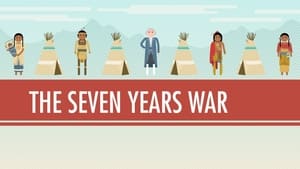
26. The Seven Years War
In which John teaches you about the Seven Years War, which may have lasted nine years. Or as many as 23. It was a very confusing was. The Seven Years War was a global war, fought on five continents, which is kind of a lot. John focuses on the war as it happened in the Americas, Asia, and Africa. the "great" European powers were the primary combatants, but they fought just about everywhere. Of course, this being a history course, the outcomes of this war still resonate in our lives today. The Seven Years war determined the direction of the British Empire, and led pretty directly to the subject of Episode 28, the American Revolution.
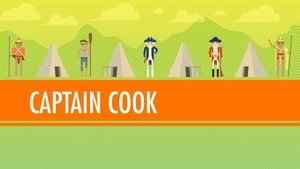
27. The Amazing Life and Strange Death of Captain Cook
In which John Green teaches you about the life and death of one of history's great explorers, Captain James Cook of the British Navy. He charted large swaths of the Pacific ocean, laid claim to Australia and New Zealand, and died a bizarre death in the Sandwich Islands, which are now called the Hawaiian Islands. Exactly how and why Captain Cook was killed in Hawaii is a long-running historical debate. John presents two interpretations of the event, and talks about what the differing interpretations say about history. It turns out how the story is told depends on who is doing the storytelling, and people from different backgrounds can interpret events in very different ways. Also, there is a celebration and a moustache involved in this episode, so you definitely don't want to miss it.
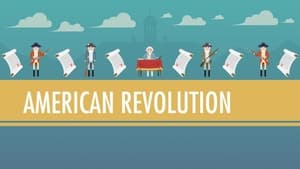
28. Tea, Taxes, and The American Revolution
In which John Green teaches you about the American Revolution and the American Revolutionary War, which it turns out were two different things. John goes over the issues and events that precipitated rebellion in Britain's American colonies, and he also explores the ideas that laid the groundwork for the new American democracy. Find out how the tax bill from the Seven Years War fomented an uprising, how the Enlightenment influenced the Founding Fathers, and who were the winners and losers in this conflict.(hint: many of the people living in the Colonies ended up losers) The Revolution purportedly brought freedom and equality to the Thirteen Colonies, but they weren't equally distributed. Also, you'll learn about America's love affair with commemorative ceramics and what happens when rich white guys take the reins from reins white guys, and put together a society of, by, and for rich white guys.
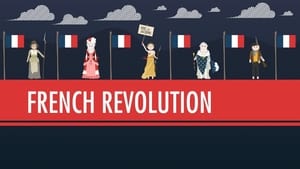
29. The French Revolution
In which John Green examines the French Revolution, and gets into how and why it differed from the American Revolution. Was it the serial authoritarian regimes? The guillotine? The Reign of Terror? All of this and more contributed to the French Revolution not being quite as revolutionary as it could have been. France endured multiple constitutions, the heads of heads of state literally rolled, and then they ended up with a megalomaniacal little emperor by the name of Napoleon. But how did all of this change the world, and how did it lead to other, more successful revolutions around the world? Watch this video and find out. Spoiler alert: Marie Antoinette never said, "Let them eat cake." Sorry.
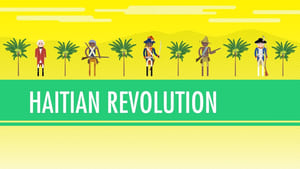
30. Haitian Revolutions
Ideas like liberty, freedom, and self-determination were hot stuff in the late 18th century, as evidenced by our recent revolutionary videos. Although freedom was breaking out all over, many of the societies that were touting these ideas relied on slave labor. Few places in the world relied so heavily on slave labor as Saint-Domingue, France's most profitable colony. Slaves made up nearly 90% of Saint-Domingue's population, and in 1789 they couldn't help but hear about the revolution underway in France. All the talk of liberty, equality, and fraternity sounds pretty good to a person in bondage, and so the slaves rebelled. This led to not one but two revolutions, and ended up with France, the rebels, Britain, and Spain all fighting in the territory. Spoiler alert: the slaves won. So how did the slaves of what would become Haiti throw off the yoke of one of the world's great empires? John Green tells how they did it, and what it has meant in Haiti and in the rest of the world.
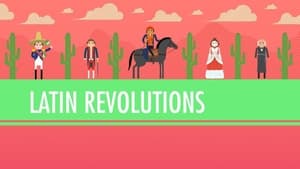
31. Latin American Revolutions
In which John Green talks about the many revolutions of Latin America in the 19th century. At the beginning of the 1800s, Latin America was firmly under the control of Spain and Portugal. The revolutionary zeal that had recently created the United States and had taken off Louis XVI's head in France arrived in South America, and a racially diverse group of people who felt more South American than European took over. John covers the soft revolution of Brazil, in which Prince Pedro boldly seized power from his father, but promised to give it back if King João ever returned to Brazil. He also covers the decidedly more violent revolutions in Mexico, Venezuela, and Argentina. Watch the video to see Simón Bolívar's dream of a United South America crushed, even as he manages to liberate a bunch of countries and get two currencies and about a thousand schools and parks named after him.
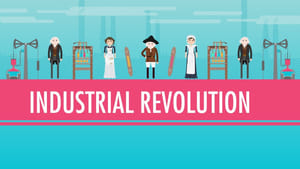
32. Coal, Steam, and The Industrial Revolution
In which John Green wraps up revolutions month with what is arguably the most revolutionary of modern revolutions, the Industrial Revolution. While very few leaders were beheaded in the course of this one, it changed the lives of more people more dramatically than any of the political revolutions we've discussed. So, why did the Industrial Revolution happen around 1750 in the United Kingdom? Coal. Easily accessible coal, it turns out. All this, plus you'll finally learn the difference between James Watt and Thomas Newcomen, and will never again be caught telling people that your blender has a 900 Newcomen motor.

33. Capitalism and Socialism
In which John Green teaches you about capitalism and socialism in a way that is sure to please commenters from both sides of the debate. Learn how capitalism arose from the industrial revolution, and then gave rise to socialism. Learn about how we got from the British East India Company to iPhones and consumer culture in just a couple of hundred years. Stops along the way include the rise of industrial capitalism, mass production, disgruntled workers, Karl Marx, and the Socialist Beard. The socialist reactions to the ills of capitalism are covered as well, and John discusses some of the ideas of Karl Marx, and how they've been implemented or ignored in various socialist states.
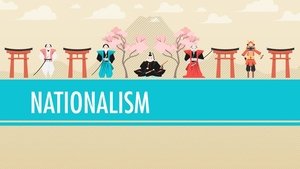
34. Samurai, Daimyo, Matthew Perry, and Nationalism
In which John Green teaches you about Nationalism. Nationalism was everywhere in the 19th century, as people all over the world carved new nation-states out of old empires. Nationalist leaders changed the way people thought of themselves and the places they lived by reinventing education, military service, and the relationship between government and governed. In Japan, the traditional feudal society underwent a long transformation over the course of about 300 years to become a modern nation-state. John follows the course of Japanese history from the emergence of the Tokugawa Shogunate to the Meiji Restoration, and covers Nationalism in many other countries along the way. All this, plus a special guest appearance, plus the return of an old friend on a extra-special episode of Crash Course.
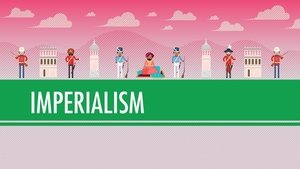
35. Imperialism
In which John Green teaches you about European Imperialism in the 19th century. European powers started to create colonial empires way back in the 16th century, but businesses really took off in the 19th century, especially in Asia and Africa. During the 1800s, European powers carved out spheres of influence in China, India, and pretty much all of Africa. While all of the major (and some minor) powers in Europe participated in this new imperialism, England was by far the most dominant, once able to claim that the "sun never set on the British Empire." Also, they went to war for the right to continue to sell opium to the people of China. Twice. John will teach you how these empires managed to leverage the advances of the Industrial Revolution to build vast, wealth-generating empires. As it turns out, improved medicine, steam engines, and better guns were crucial in the 19th century conquests.
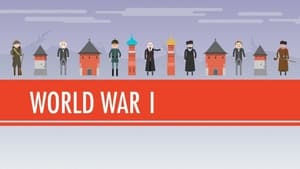
36. Archdukes, Cynicism, and World War I
In which John Green teaches you about the war that was supposed to end all wars. Instead, it solved nothing and set the stage for the world to be back at war just a couple of decades later. As an added bonus, World War I changed the way people look at the world, and normalized cynicism and irony. John will teach you how the assassination of an Austrian Archduke kicked off a new kind of war that involved more nations and more people than any war that came before. New technology like machine guns, airplanes, tanks, and poison gas made the killing more efficient than ever. Trench warfare and modern weapons led to battles in which tens of thousands of soldiers were killed in a day, with no ground gained for either side. World War I washed away the last vestiges of 19th century Romanticism and paved the way for the 20th century modernism that we all know and find to be cold and off-putting. While there may not be much upside to WWI, at least it inspired George M.
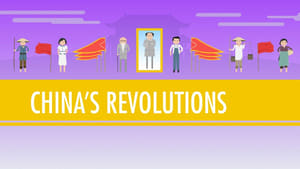
37. Communists, Nationalists, and China's Revolutions
In which John Green teaches you about China's Revolutions. While the rest of the world was off having a couple of World Wars, China was busily uprooting the dynastic system that had ruled there for millennia. Most revolutions have some degree of tumult associated with them, but China's 20th century revolutions were REALLY disruptive. In 1911 and 1912, Chinese nationalists brought 3000 years of dynastic rule to an end. China plunged into chaos as warlords staked out regions of the country for themselves. The nationalists and communists joined forces briefly to bring the nation back together under the Chinese Republic, and then they quickly split and started fighting the Chinese Civil War. The fight between nationalists and communists went on for decades, and was interrupted by an alliance to fight the invading Japanese during World War II. After the World War II ended, the Chinese Civil War was back on.
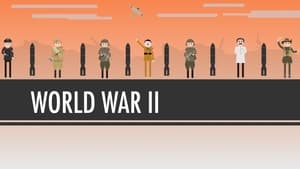
38. World War II
In which John Green teaches you about World War II, aka The Great Patriotic War, aka The Big One. So how did this war happen? And what does it mean? We've all learned the facts about World War II many times over, thanks to repeated classroom coverage, the History channel, and your grandfather (or maybe great-grandfather) showing you that Nazi bayonet he used to keep in his sock drawer and telling you a bunch of age-inappropriate stories about his harrowing war experiences. So, why did the Axis powers think forceful expansion was a good idea? (they were hungry). So why did this thing shake out in favor of the Allies? HInt: it has to do with the fact that it was a world war. Germany and Japan made some pretty serious strategic errors, such as invading Russia and attacking the United States, and those errors meant that pretty much the whole world was against them. So, fins out how this worldwide alliance came together to stop the Axis expansion.
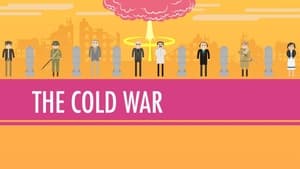
39. USA vs USSR Fight! The Cold War
In which John Green teaches you about the Cold War, which was occasionally hot, but on average, it was cool. In the sense of its temperature. It was by no means cool, man. After World War II, there were basically two big geopolitical powers left to divide up the world. And divide they did. The United States and the Soviet Union divvied up Europe in the aftermath of the war, and then proceeded to spend the next 45 years fighting over the rest of the world. It was the great ideological struggle, with the US on the side of capitalism and profit, and the USSR pushing Communism, so-called. While both sides presented themselves as the good guy in this situation, the reality is that there are no good guys. Both parties to the Cold War engaged in forcible regime changes, built up vast nuclear arsenals, and basically got up to dirty tricks. If you had to pick a bad guy though, I would point out that the USSR had no intention of brining Laika the Cosmonaut Dog home alive.
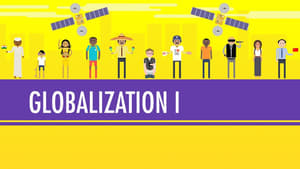
40. Decolonization and Nationalism Triumphant
In which John Green teaches you about the post-World War II breakup of most of the European empires. As you'll remember from previous installments of Crash Course, Europeans spent several centuries sailing around the world creating empires, despite the fact that most of the places they conquered were perfectly happy to carry on alone. After World War II, most of these empires collapsed. This is the story of those collapses. In most places, the end of empire was not orderly, and violence often ensued. While India was a (sort of) shining example of non-violent change, in places like The Congo, Egypt, Rwanda, Vietnam, Cambodia, and Laos, things didn't go smoothly at all. John brings you all this, plus pictures of Sea Monkeys. Sadly, they don't look anything like those awesome commercials in the comic books.

41. Globalization I - The Upside
In which John Green teaches you about globalization, a subject so epic, so, um, global, it requires two videos. In this video, John follows the surprisingly complex path of t-shirt as it criss-crosses the world before coming to rest on your doorstep, and eventually in your dresser. (Unless you're one of those people who never puts their laundry away and lives out of a laundry basket. If that's the case, shame on you.) Anyway, the story of the t-shirt and its manufacture in far-flung places like China, Guatemala, and India is a microcosm of what's going on in the global economy. Globalization is a bit of a mixed bag, and there have definitely been winners and losers along the way. In this episode John will talk about some of the benefits that have come along with it. Next week, he'll get into some of the less-positive side effects of globalization.
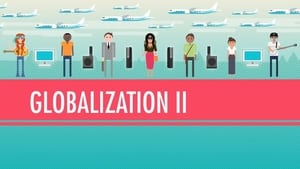
42. Globalization II - Good or Bad?
In which John asks whether globalization is a net positive for humanity. While the new global economy has created a lot of wealth, and lifted a lot of people out of poverty, it also has some effects that aren't so hot. Wealth disparity, rising divorce rates, environmental damage, and new paths for the spread of disease. So does all this outweigh the economic benefits, the innovation, and the relative peace that come with interconnected economies? As usual, the answer is not simple. In this case, we're living in the middle of the events we're discussing, so it's hard to know how it's going to turn out.
